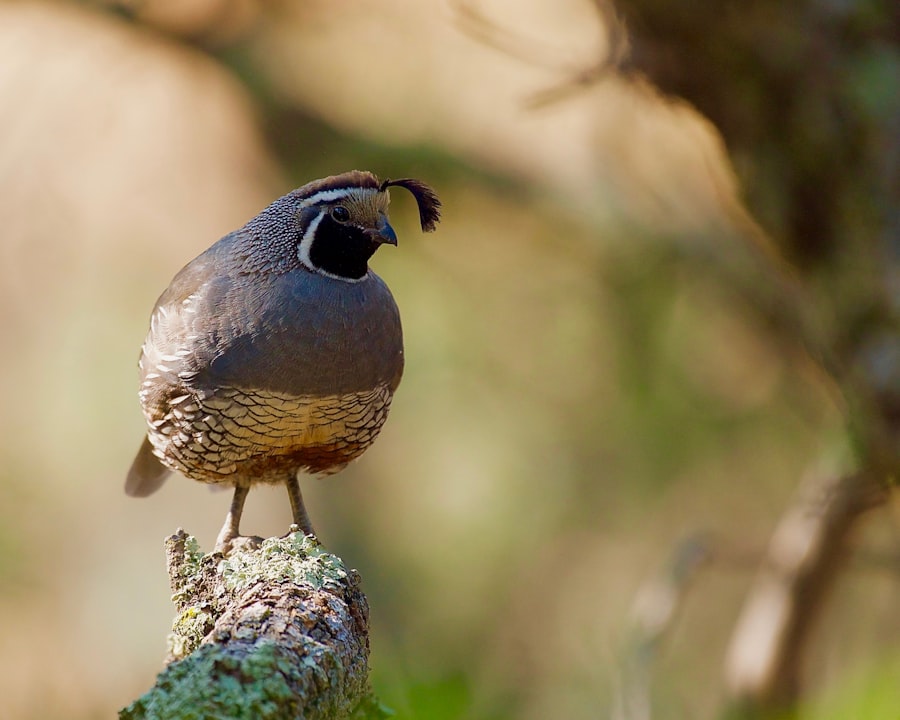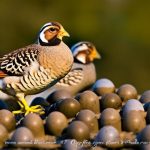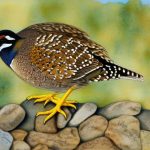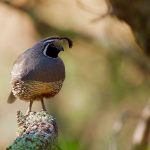Stubble quail, also known as Coturnix pectoralis, are small game birds native to Australia. They are popular among breeders for their delicious meat and beautiful plumage. Breeding stubble quail can be a rewarding and profitable venture for those who are passionate about aviculture. However, it requires careful planning, dedication, and knowledge of the breeding process. In this article, we will explore the various aspects of stubble quail breeding, including selecting breeding stock, housing and care, breeding and incubation process, caring for chicks and juveniles, health and disease management, and tips for successful breeding.
Table of Contents
Key Takeaways
- Stubble quail breeding requires careful selection of breeding stock to ensure healthy and productive offspring.
- Proper housing and care are essential for successful breeding of stubble quail, including providing adequate space and a balanced diet.
- The breeding and incubation process for stubble quail involves careful monitoring of temperature and humidity levels to ensure successful hatching.
- Caring for chicks and juveniles requires providing a warm and safe environment, as well as a diet high in protein for healthy growth.
- Health and disease management are crucial aspects of successful stubble quail breeding, including regular monitoring and prompt treatment of any issues.
Selecting Breeding Stock
Selecting the right breeding stock is crucial for successful stubble quail breeding. When choosing breeding stock, it is important to select birds that are healthy, strong, and free from genetic defects. Look for birds with good body conformation, bright eyes, and clean feathers. Avoid birds that are too small or too large, as they may not be ideal for breeding. It is also important to select birds with good temperament, as aggressive or overly timid birds may not be suitable for breeding. Additionally, consider the birds’ lineage and breeding history to ensure that you are starting with quality breeding stock.
When selecting breeding stock, it is also important to consider genetic diversity. Inbreeding can lead to genetic abnormalities and reduced fertility in offspring. Therefore, it is advisable to introduce new bloodlines into your breeding program regularly. This can be done by purchasing birds from reputable breeders or participating in bird shows and auctions. By maintaining genetic diversity in your breeding stock, you can improve the overall health and vigor of your quail flock.
Housing and Care for Breeding Stubble Quail
Proper housing and care are essential for the health and well-being of breeding stubble quail. When setting up housing for breeding quail, it is important to provide a clean and spacious environment that allows for natural behaviors such as dust bathing and foraging. A well-ventilated coop with good lighting and insulation is essential for maintaining optimal conditions for breeding. Additionally, provide nesting boxes or areas with suitable nesting materials to encourage natural breeding behaviors.
Quail are social birds and thrive in groups, so it is important to provide ample space for them to move around and interact with each other. The recommended space allowance for breeding quail is approximately 1 square foot per bird. It is also important to provide a balanced diet that meets the nutritional needs of breeding quail. A diet high in protein is essential for egg production and fertility. Supplement their diet with fresh greens, fruits, and grit to ensure they receive a well-rounded diet.
Regular health checks are also important to ensure the well-being of breeding quail. Monitor their behavior, appetite, and droppings regularly to detect any signs of illness or distress. Provide regular access to clean water and maintain a clean living environment to prevent the spread of diseases.
Breeding and Incubation Process
Breeding stubble quail can be a rewarding experience, but it requires careful planning and attention to detail. Stubble quail are prolific layers and can produce a large number of eggs throughout the breeding season. To encourage natural breeding behaviors, provide suitable nesting areas with soft bedding material such as straw or hay. Monitor the nesting boxes regularly for eggs and remove them promptly to prevent breakage or contamination.
Once the eggs are collected, they can be placed in an incubator for artificial incubation. The optimal temperature for incubating quail eggs is around 99.5 degrees Fahrenheit with a humidity level of 60-70%. Turn the eggs regularly to ensure proper development and prevent the embryos from sticking to the shell membrane. After approximately 17 days of incubation, the eggs will begin to hatch, and the chicks will emerge.
It is important to provide a warm and safe environment for the newly hatched chicks. A brooder with a heat lamp or heat pad can provide the necessary warmth for the chicks to thrive. Ensure that the brooder is set up with clean bedding, fresh water, and chick starter feed. Monitor the chicks closely during the first few days to ensure they are eating, drinking, and staying warm.
Caring for Chicks and Juveniles
Caring for chicks and juveniles requires attention to detail and proper management practices. After hatching, the chicks should be kept in a brooder with a constant source of warmth for the first few weeks of their lives. Provide a balanced diet of chick starter feed that is high in protein to support their growth and development. Additionally, offer fresh water at all times to keep the chicks hydrated.
As the chicks grow, they will need more space to move around and exercise. Transfer them to a larger brooder or outdoor pen with access to natural sunlight and fresh air. Monitor their behavior and interactions closely to ensure they are thriving in their new environment.
Once the chicks reach juvenile stage, they can be transitioned to a grow-out pen with other juveniles or adult quail. Provide ample space for them to move around and engage in natural behaviors such as dust bathing and foraging. Continue to monitor their health and well-being regularly to ensure they are growing and developing as expected.
Health and Disease Management

Maintaining the health of your quail flock is essential for successful breeding. Regular health checks and preventive measures can help minimize the risk of diseases and ensure the overall well-being of your birds. Keep a close eye on their behavior, appetite, droppings, and overall appearance to detect any signs of illness or distress.
Preventive measures such as vaccination, parasite control, and biosecurity protocols can help minimize the risk of diseases in your quail flock. Consult with a veterinarian or avian specialist to develop a health management plan that is tailored to the specific needs of your quail flock.
In the event of an illness outbreak, it is important to isolate affected birds and seek veterinary care promptly. Quarantine measures can help prevent the spread of diseases within your flock and minimize the impact on overall productivity.
Tips for Successful Stubble Quail Breeding
Successful stubble quail breeding requires dedication, attention to detail, and a passion for aviculture. Here are some tips to help you succeed in your breeding endeavors:
1. Research: Take the time to research and educate yourself about stubble quail breeding before getting started. Understanding their natural behaviors, nutritional needs, and breeding requirements can help you make informed decisions throughout the breeding process.
2. Quality Breeding Stock: Invest in quality breeding stock from reputable breeders with a good track record of producing healthy and productive birds.
3. Proper Housing: Provide a clean, spacious, and well-ventilated housing environment that meets the natural needs of breeding quail.
4. Nutrition: Offer a balanced diet that meets the nutritional needs of breeding quail, including high-protein feed for egg production and fertility.
5. Health Management: Implement regular health checks, preventive measures, and biosecurity protocols to maintain the overall health of your quail flock.
6. Patience: Breeding quail requires patience and dedication. Be prepared for challenges along the way and be patient as you work towards your breeding goals.
In conclusion, stubble quail breeding can be a rewarding venture for those who are passionate about aviculture. By selecting quality breeding stock, providing proper housing and care, managing the breeding process effectively, and maintaining the health of your quail flock, you can achieve success in your breeding endeavors. With dedication and attention to detail, you can enjoy the satisfaction of raising healthy quail and contributing to the conservation of this beautiful species.
If you are interested in breeding stubble quail, you may also want to learn about the incubation period for goose eggs. Check out this informative article on what is the incubation period for goose eggs to gain more insight into the breeding process for different types of poultry.
FAQs
What is the breeding season for stubble quail?
The breeding season for stubble quail typically occurs from September to January in Australia.
How do stubble quail build their nests?
Stubble quail build their nests on the ground, usually in dense grass or crop stubble. The female constructs the nest and lines it with grass and feathers.
How many eggs do stubble quail lay?
Stubble quail typically lay 6-12 eggs in a clutch, with an average of 8 eggs per nest.
How long does it take for stubble quail eggs to hatch?
The incubation period for stubble quail eggs is around 18-21 days.
What do stubble quail chicks eat?
Stubble quail chicks are precocial, meaning they are able to feed themselves shortly after hatching. They primarily feed on insects and seeds.
Do stubble quail raise their young together?
Stubble quail are not known for cooperative breeding, so the female is primarily responsible for caring for the young.
Meet Walter, the feathered-friend fanatic of Florida! Nestled in the sunshine state, Walter struts through life with his feathered companions, clucking his way to happiness. With a coop that’s fancier than a five-star hotel, he’s the Don Juan of the chicken world. When he’s not teaching his hens to do the cha-cha, you’ll find him in a heated debate with his prized rooster, Sir Clucks-a-Lot. Walter’s poultry passion is no yolk; he’s the sunny-side-up guy you never knew you needed in your flock of friends!







